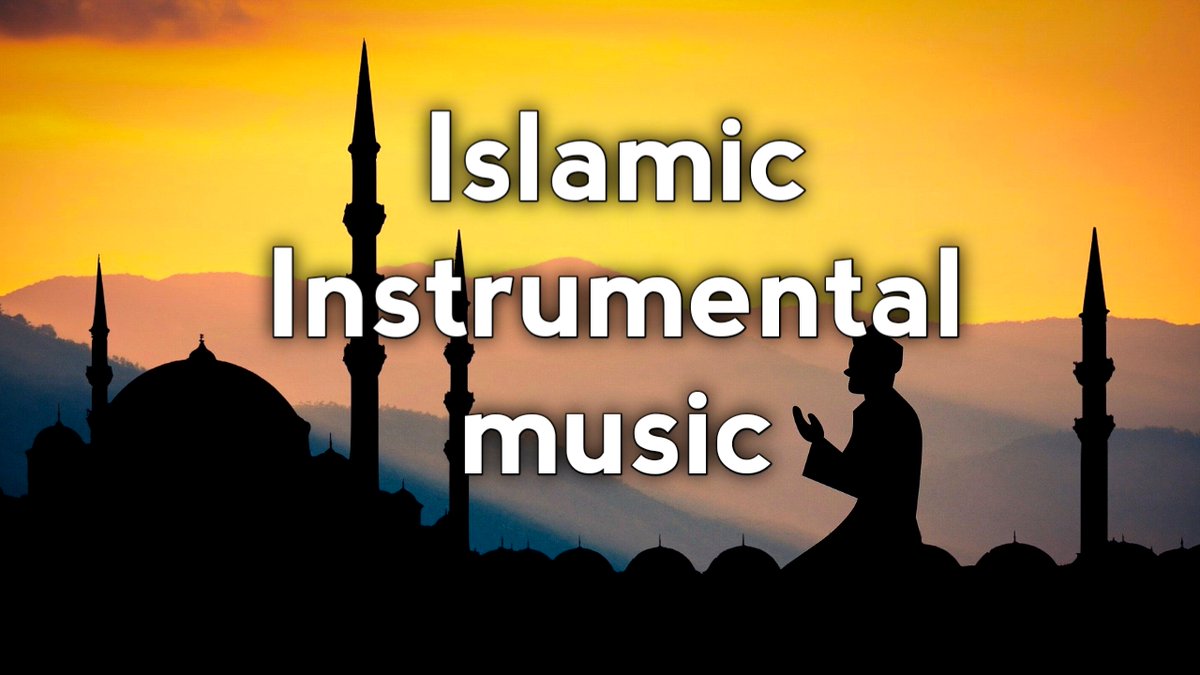
It is stored on online music libraries, and distributed in accordance with the royalty-free model. However, it is not created for just one specific project Subscribe to Envato Elements for unlimited Music downloads for a single monthly fee. It acts as a background sound or even as a score.
ISLAMIC MUSIC FREE DOWNLOAD TV
Royalty-free music is a composition made for various kinds of multimedia projects, such as video, TV show, film or podcast.

That is not correct when talking about music. This idea has a degree of discomfort since the word "stock" sometimes connotes something that has been utilized by lots of people, has low-quality, or just pointless to anybody. Often, royalty free music is mistakenly called stock music. It can even last for 1 hour and still sound as made by a pro. get access to Arabic song quickly and easily. Mix them all or choose just one and make your composition of any duration! Top Arabic Music free unlimited songs for those who love to listen. You won’t have to spend time on editing:Īll the tracks are provided with 15, 30, and 60 sec versions to perfectly match an ad roll.Įxplore the opportunity to experiment with music using loops. With the unique, thoroughly elaborated Search and helpful filters, the perfect song is closer than ever.Īll music in our library is specially designed for commercial use. Just select your tracks from the ON DEMAND CONTENT window. You can stop the stream and select your own tracks to play. Tracks are not repeated for at least 48 Hours. Continues streaming of Naaths, Nazms, Hamd & Arabic Anasheed 24/7.
ISLAMIC MUSIC FREE DOWNLOAD LICENSE
Download unlimited royalty free music with commercial license to use in personal and commercial business projects. Use as background soundtrack in film, documentary, travel vlog, and other media projects that need Arabic instrumental music. Listening to Pictures in Iran, by Anthony Welch Download royalty free Arabic music with recognizable Middle East feel. The Social and Sacred Microcosm of the Kiiz Üi: Space and Sound in Rituals for the Dead among the Kazakhs of Mongolia, by Saida Daukeyeva Ideal Form and Meaning in Sufi Shrines of Pakistan: A Return to the Spirit, by Kamil Khan Mumtaz Sounds of Love and Hate: Sufi Rap, Ghetto Patrimony, and the Concrete Politics of the French Urban Periphery, by Paul A. Aristocratic Residences and the Majlis in Umayyad Córdoba, by Glaire D. Tents of Silk and Trees of Light in the Lands of Najd: The Aural and the Visual at a Mawlid Celebration in the Alhambra, by Cynthia Robinson Aural Geometry: Poetry, Music, and Architecture in the Arabic Tradition, by Samer Akkach Nightingales and Sweet Basil: The Cultural Geography of Aleppine Song, by Jonathan H. Venerating Cairo’s Saints through Monument and Ritual: Islamic Reform and the Rise of the Architext, by Michael Frishkopf Articulating Otherness in the Construction of Alevi-Bektaşi Rituals and Ritual Space in a Transnational Perspective, by Irene Markoff A Concert Platform: A Space for a Style in Turkish Music, by John Morgan O’Connell

A Sound Status among the Ottoman Elite: Architectural Patrons of Sixteenth-Century Istanbul Mosques and Their Recitation Programs, by Nina Ergin

Listening to Islamic Gardens and Landscapes, by D. Introduction: Music, Sound, and Architecture in Islam, by Michael Frishkopf and Federico Spinetti.List of Figures, Plates, Charts, and Tables.Underscoring the intimate relationship between traditional Muslim sonic performances, such as the recitation of the Qur’an or devotional songs, and conventional Muslim architectural spaces, from mosques and Sufi shrines to historic aristocratic villas, gardens, and gymnasiums, the book reveals Islam as an ideal site for investigating the relationship between sound and architecture, which in turn proves to be an innovative and significant angle from which to explore Muslim cultures. Representing the fields of ethnomusicology, anthropology, art history, architecture, history of architecture, religious studies, and Islamic studies, the volume’s contributors consider sonic performances ranging from poetry recitation to art, folk, popular, and ritual musics-as well as religious expressions that are not usually labeled as “music” from an Islamic perspective-in relation to monumental, vernacular, ephemeral, and landscape architectures interior design decoration and furniture urban planning and geography. Tracing the connections between music making and built space in both historical and contemporary times, Music, Sound, and Architecture in Islam brings together domains of intellectual reflection that have rarely been in dialogue to promote a greater understanding of the centrality of sound production in constructed environments in Muslim religious and cultural expression.


 0 kommentar(er)
0 kommentar(er)
